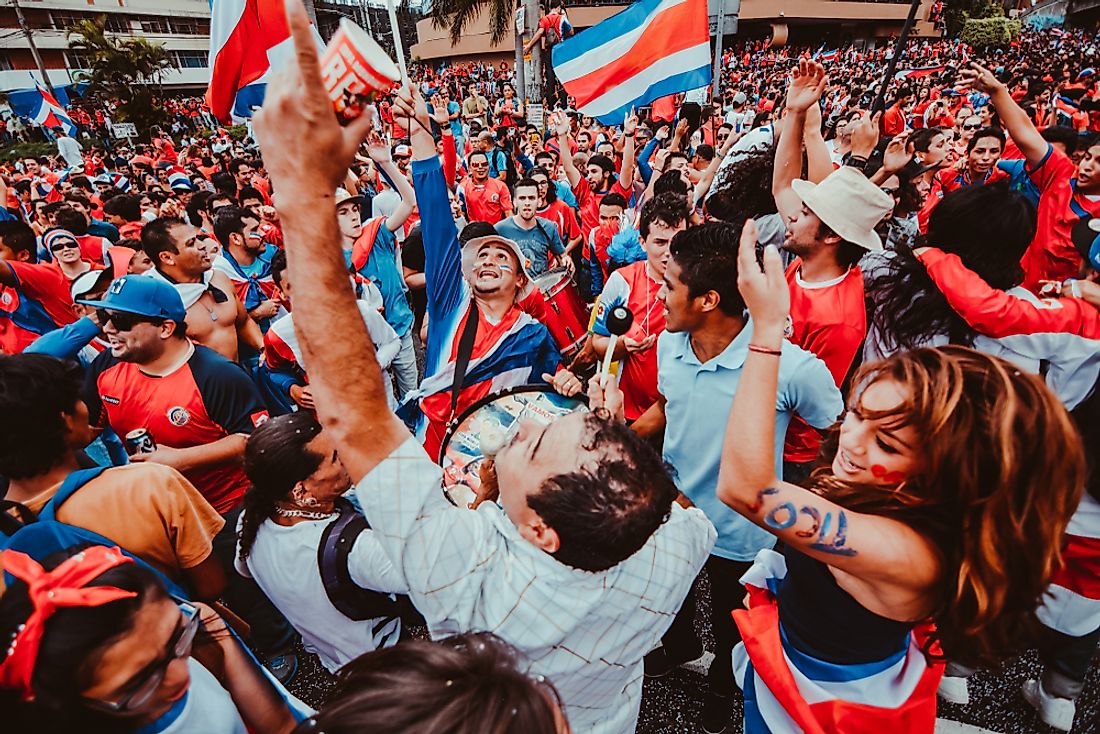Ethnic Groups of Costa Rica

Costa Rica is a country in Central America, bordering the Caribbean Sea to the southwest and the Pacific Ocean to the northeast. It is also bordered by Panama, Ecuador, and Nicaragua to the south, southeast, and north respectively. Costa Rica covers an area of approximately 19,714 square miles. According to the UN, the country has a population of approximately 5 million people of which about 340,000 live in San Jose, Costa Rica’s capital and the largest city and 2 million people in the surrounding metropolitan area. There are about 135,000 Costa Ricans or 2.8% of the population living as immigrants in other countries such as the US, Canada, Panama, Nicaragua, and Spain.
Demographic Overview of Costa Rica
Costa Rica has a population of approximately 5 million residents, making it the 123rd most populated country in the world. With an area of about 19,714 square miles, it has a population density of 220 people per square miles. The indigenous population of Costa Rica is only 60,000 or about 1% of the total population. The country has the lowest rate of emigration in the Caribbean Basin, with only 135,000 people living outside the country. The population of Costa Rica is growing at a rate of 1.5% per annum. More than half of the population (60%) live in urban areas, one of the highest among the developing countries. The population of Costa Rica is divided into several ethnic groups. Below is the ethnic composition of the country’s population.
White/Mixed
According to the 2011 population census in Costa Rica, the European and mixed European-Indigenous Costa Ricans formed the bulk of the population. They are the ethnic majority group in the country, accounting for about 83.6% of the population (3.6 million). Many people in Costa Rica are mainly of mixed Spanish and Amerindian ancestry since the country was a Spanish colony for a long time. The immigration of Europeans into Costa Rica was promoted by “whitening” policy which was popular, especially in Latin America. The majority of Mestizos live in urban areas of Costa Rica, although a significant number also live in rural areas. Spanish is the dominant language spoken by most members of the ethnic group.
African
About 8% of Costa Ricans identify with African ancestry. However, only 1% of the population identify as Black. The rest of the population identifies with a mixture of European and African ancestry. Although Costa Rica never had a flourishing slave trade, the first few Africans who arrived in the country were slaves. When slavery was abolished in 1824, slaves were integrated into society. The second group of Africans came into the country during the migration of Afro-Caribbean into Central America around 1872. The majority came from Jamaica and other nations.
Indigenous
Before the coming of the Spanish, Costa Rica was sparsely inhabited by the indigenous people. There are approximately 104,000 Native Costa Ricans in the country, accounting for about 2.42% of the population. The oldest settlers in the territory that is now Costa Rica are eight groups of indigenous peoples; Bribri, Cabecar, Brunca, Huetar, Chorotega, Ngobe, Maleku, and Teribe. Cabecar is the largest native group, with a population of approximately 17,000 people. It is also considered the most isolated group, having been pushed to the Chirripo Mountains. A total of 24 territories throughout the country have been allocated to the indigenous people. However, the groups are still marginalized and are still fighting for the legal recognition of their rights.
Afro-Caribbean/Blacks
When the Spanish settled in Costa Rica, they began shipping Africans into the country to supplement indigenous labor. Most of the initial group became part of the Mulattos. The second wave of Africans began arriving in the 18th century from the Caribbean, especially Jamaica. They brought with them their families and formed a self-sufficient community. This group is referred to as the Afro-Caribbean or the Black community. They account for approximately 1% of the total population of Costa Rica and are mainly found in the Limo Province.
Chinese
The Chinese population in Costa Rica is part of the diaspora Chinese population in Latin America. There are approximately 9,000 Chinese in the country, comprising less than 1% of the total population. The first group of Chinese arrived in Costa Rica in 1855. 77 Chinese people from Guangzhou had moved to Central America to work on the Panama Railway. Today, a majority of Chinese immigrants are from Taiwan, especially pensioners who are enjoying their retirement abroad. A sizeable number of Chinese are found in San Jose and Puntarenas area.











